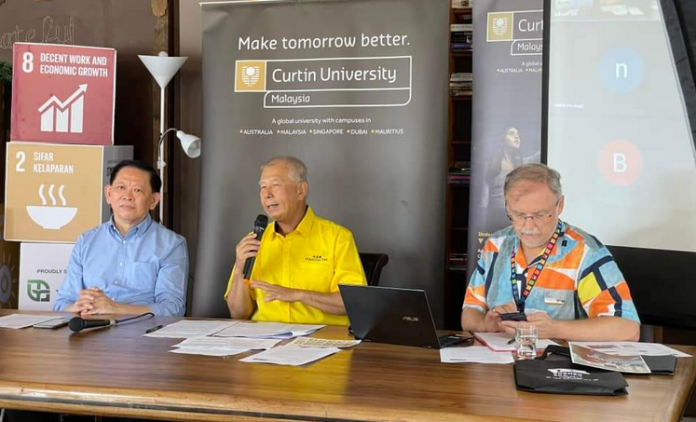MIRI, Sarawak 25 April 2023: One of the biggest challenges facing the hospitality industry in Sarawak post-Covid-19 is the shortage of skilled labour, a recent roundtable discussion hosted by Curtin University concluded.
Held on the sidelines of the Bornewo SGD Summit in Miri, Sarawak’s deputy minister for tourism, creative industry and performing arts, Datuk Sebastian Ting led a group of expert panellists.

“Tourism is one of the major economic sectors in Sarawak’s post-Covid-19 Development Strategy (PCDS) 2030, and initiatives have been and are currently being undertaken to address this issue towards a resilient tourism economy,” he told the summit delegates.
These initiatives, he said, include policies and financial incentives by the Sarawak government to local tourism industry players, such as the disbursement of Bantuan Khas Sarawakku Sayang (BKSS) 1.0 to 9.0, with a total expenditure of MYR6.7 billion.
“Considering the increase of visitor arrivals at over 320% this year compared to the same period in 2022, tourism recovery is possible. Therefore, stakeholders and the young people in Sarawak must have faith in our tourism industry,” he remarked.
The roundtable discussion was facilitated by Professor Andreas Zins, Dean of the Faculty of Business of Curtin University Malaysia (Curtin Malaysia). He opened the discussion by highlighting the PCDS 2030’s projection of annual growth in tourism demand of 7 to 8% to reach pre-Covid levels by 2025.
The Curtin University report quoted him saying the tourism sector in Sarawak would need 17,500 more employees every year to sustain this growth. Even in the unlikely event, all the unemployed in Sarawak joined the tourism sector, the labour market would run dry within just a few years.
The World Travel & Tourism Council (WTTC), meanwhile, reported a labour shortfall in August 2022, where one out of 15 openings in the US (one out of six in the accommodation sector) and one out of nine in the European Union (one out of three in the travel sector and one out of five in the transportation sector) could not be filled.
Zins also noted that other Curtin campuses in Australia, Singapore and Mauritius reported similar problems in their countries.
He said that many hospitality workers were not keen to return to their old jobs following Covid-19, and there were multiple reasons for this, though not all were exclusively due to the pandemic. They included concerns about low salaries, inflexible working hours and conditions, discrimination of women, lack of training opportunities and further education, age discrimination, and a bad image of the entire industry.
Speaking on the labour shortage faced by the hospitality sector in Sarawak, Malaysia Association of Hotels Sarawak Chapter president John Teo said that 150,000 official migrant workers and another estimated 150,000 unofficial workers left the state during and after the pandemic, compounding the labour situation. In addition, many Sarawakians are still registered as state residents while working either in West Malaysia or abroad.
Teo remarked that many workers seemed to be flocking to Kalimantan, where Indonesia is building its new capital, due to attractive salaries, which are said to be twice or three times higher than what is being offered in Sarawak.
“Hence, the official statistics might deliver a distorted picture. A new challenge is the fierce labour drain towards Kalimantan, where job opportunities appear highly attractive with salaries twice or three times more than what is offered in Sarawak,” he said
Curtin Malaysia invites more proactive and meaningful dialogue among tourism stakeholders. Zins announced that roundtable discussions would continue this year.
“We are striving to deliver better and more sustainable solutions for the government and the tourism sector. Creating more attractive jobs for more people and ensuring that the visitor economy does not fall beyond 12 per cent of Sarawak’s GDP will be our focus,” he concluded.
For more information on Curtin Malaysia, visit curtin.edu.my, or look for Curtin Malaysia on Facebook, Twitter, Instagram, YouTube, LinkedIn or Tik-Tok.
(Source: Curtin University Malaysia)







